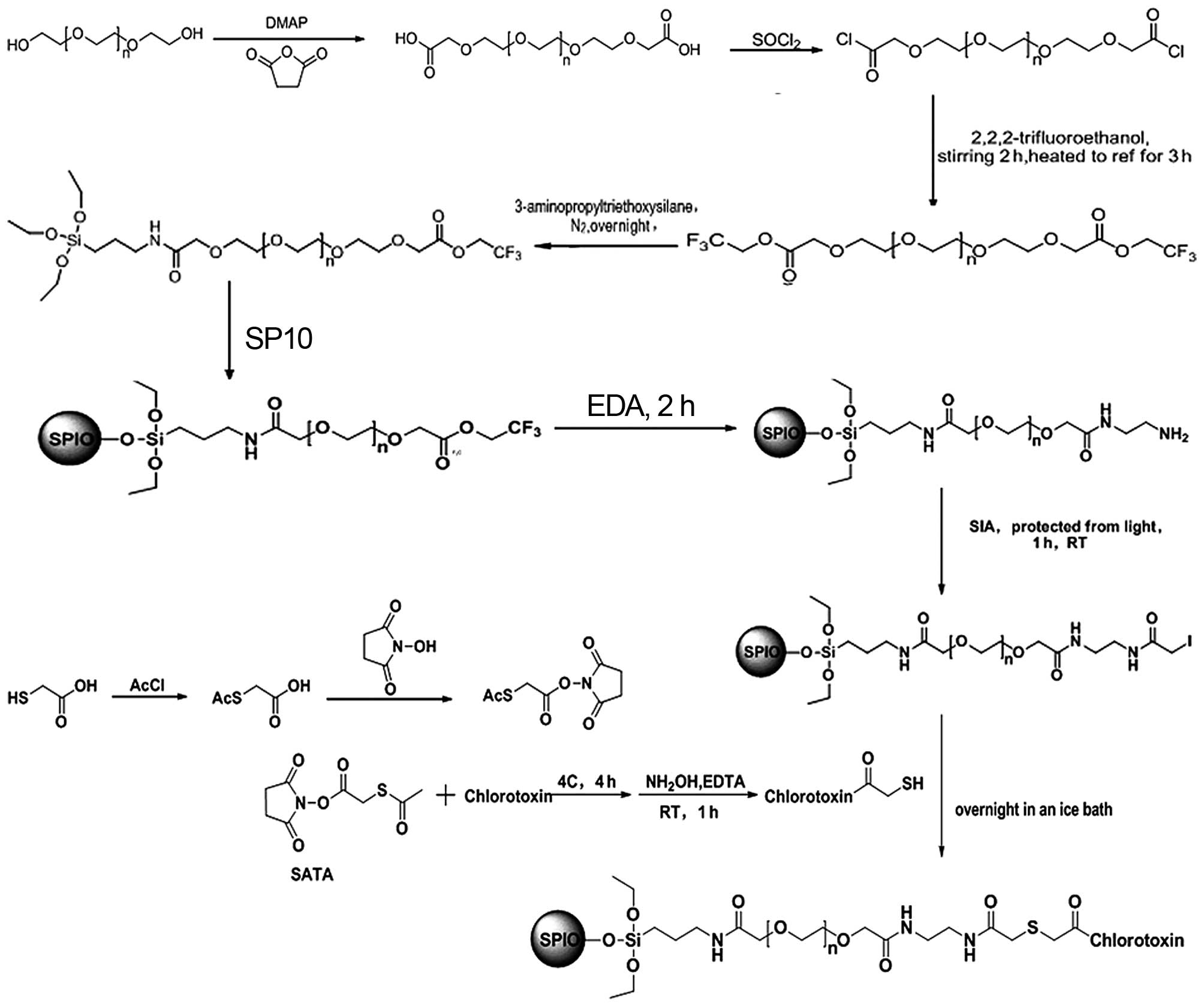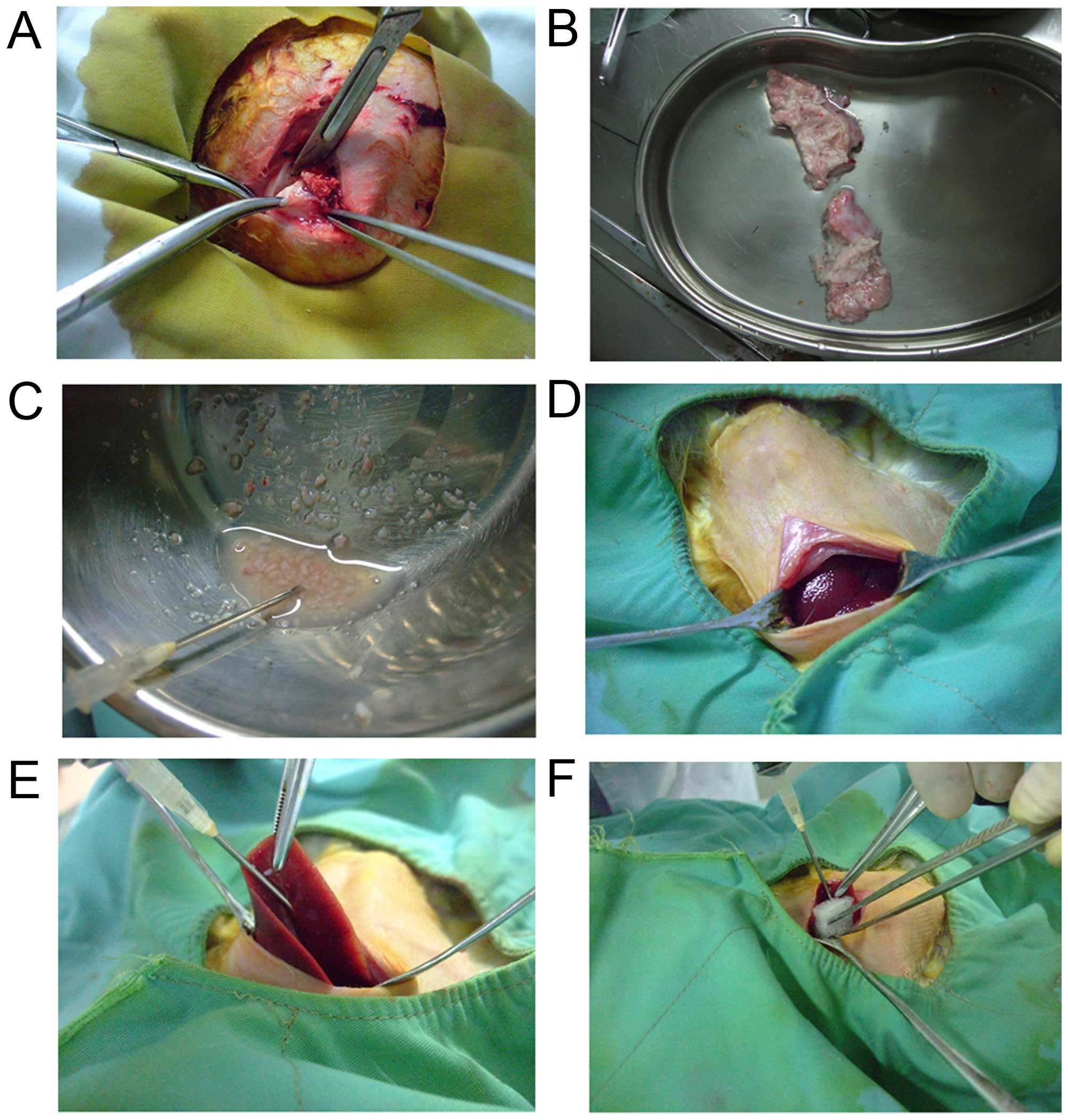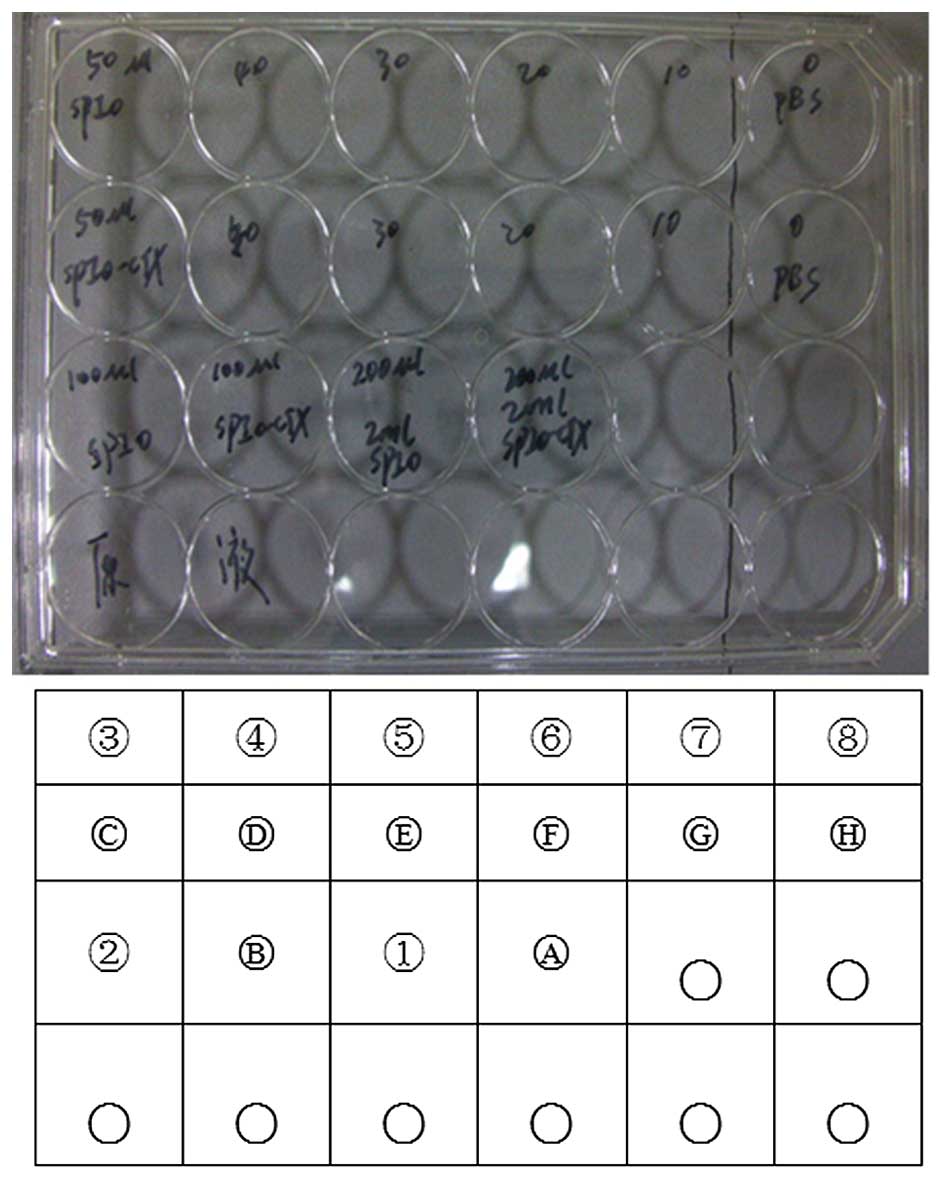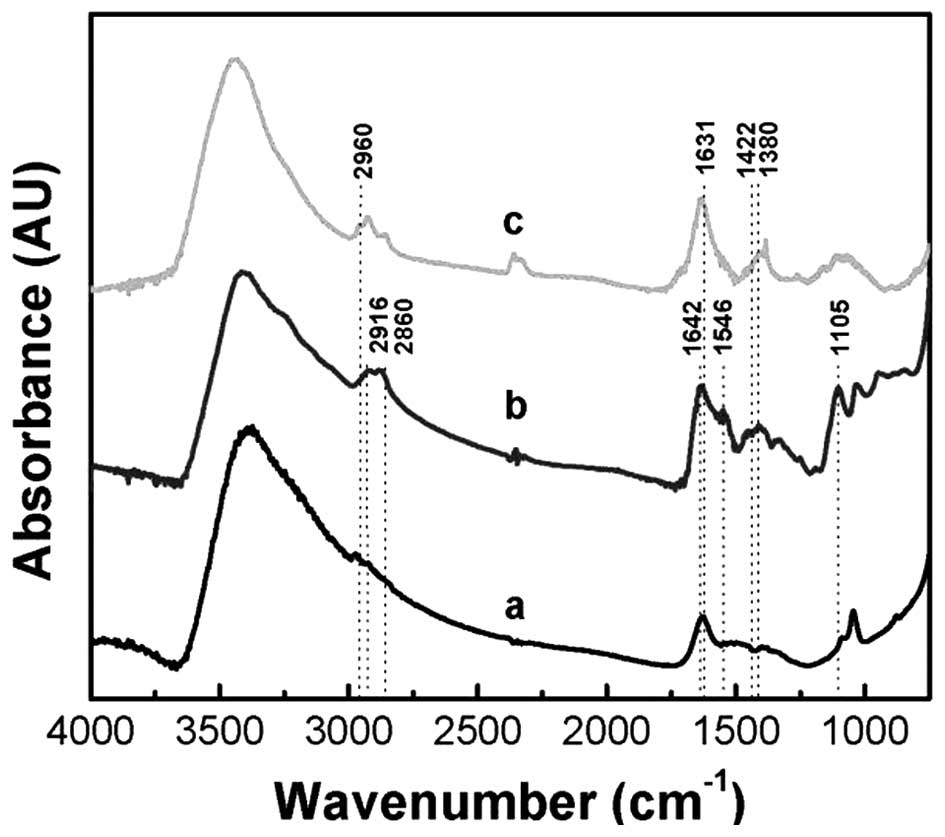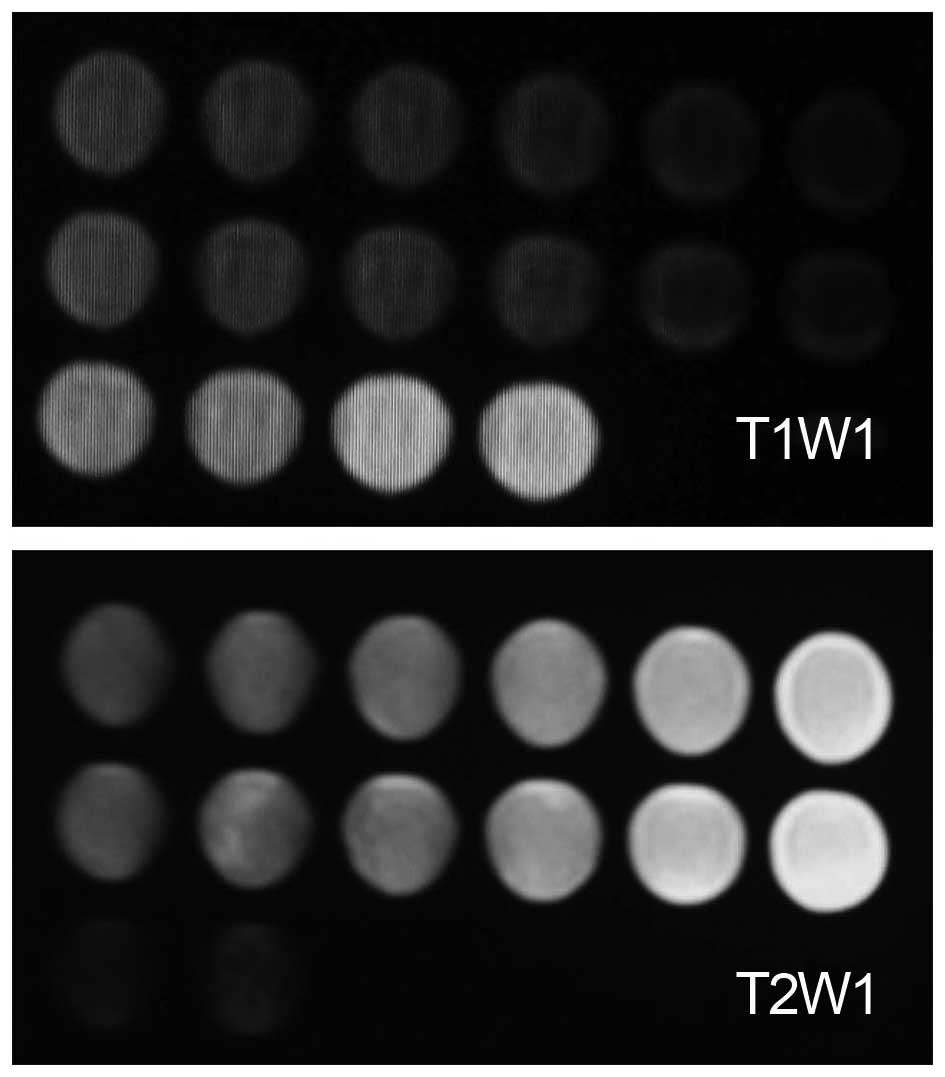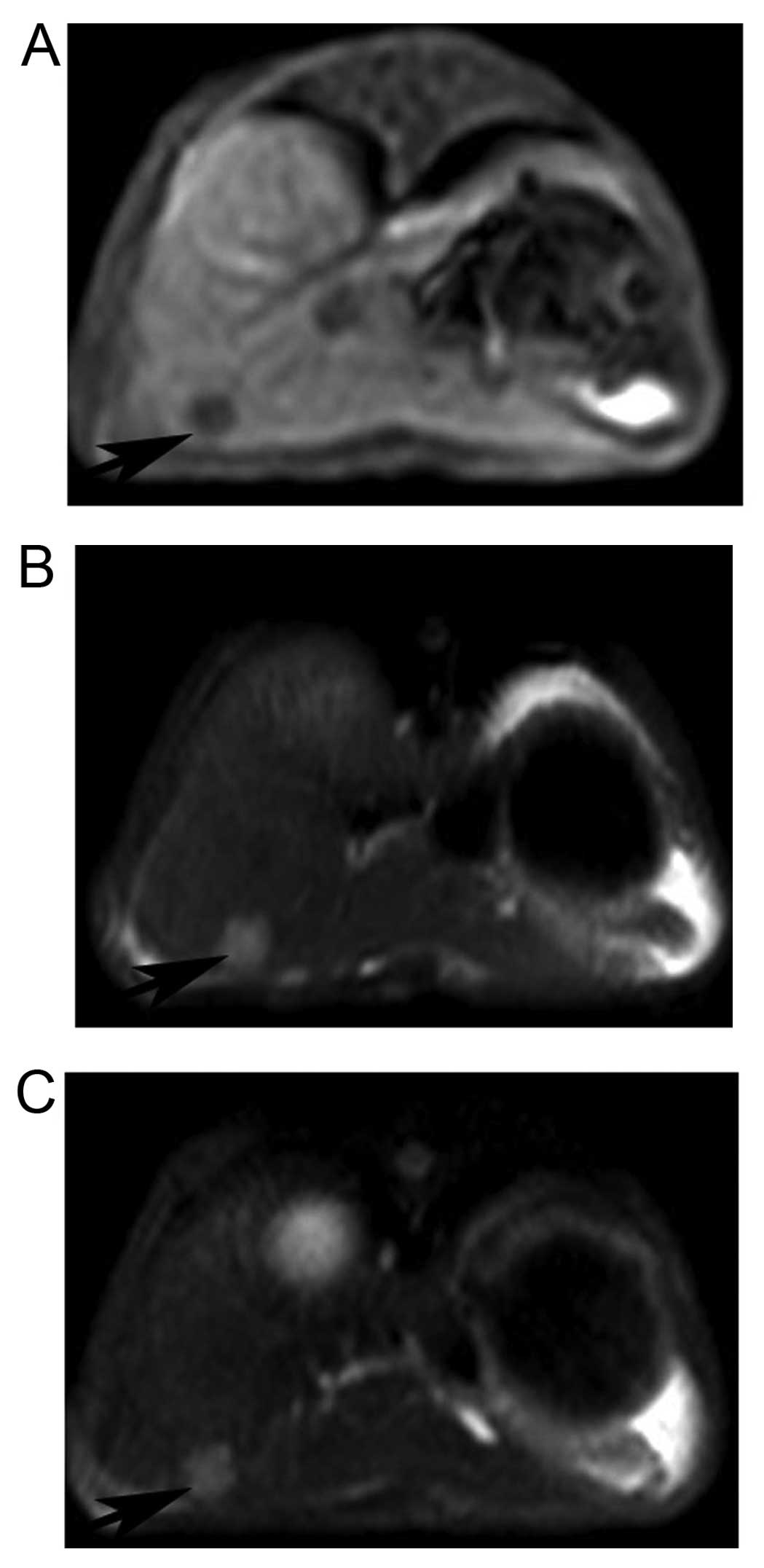|
1
|
Kudo M: Hepatocellular carcinoma 2009 and
beyond: From the surveillance to molecular targeted therapy.
Oncology. 75(Suppl 1): S1–S12. 2008. View Article : Google Scholar
|
|
2
|
Jemal A, Bray F, Center MM, Ferlay J, Ward
E and Forman D: Global cancer statistics. CA Cancer J Clin.
61:69–90. 2011. View Article : Google Scholar : PubMed/NCBI
|
|
3
|
Obuz F, Oksüzler M, Seçil M, Sağol O,
Karademir S and Astarcioğlu H: Efficiency of MR imaging in the
detection of malignant liver lesions. Diagn Interv Radiol.
12:17–21. 2006.PubMed/NCBI
|
|
4
|
Bowman K and Leong KW: Chitosan
nanoparticles for oral drug and gene delivery. Int J Nanomedicine.
1:117–128. 2006. View Article : Google Scholar
|
|
5
|
Cheng FY, Su CH, Yang YS, Yeh CS, Tsai CY,
Wu CL, Wu MT and Shieh DB: Characterization of aqueous dispersions
of Fe3O4 nanoparticles and their biomedical
applications. Biomaterials. 26:729–738. 2005. View Article : Google Scholar
|
|
6
|
Le Renard PE, Lortz R, Senatore C, Rapin
JP, Buchegger F, Petri-Fink A, Hofmann H, Doelker E and Jordan O:
Magnetic and in vitro heating properties of implants formed in situ
from injectable formulations and containing superparamagnetic iron
oxide nanoparticles (SPIONs) embedded in silica microparticles for
magnetically induced local hyperthermia. J Magn Magn Mater.
323:1054–1063. 2011. View Article : Google Scholar
|
|
7
|
Rosen JE, Chan L, Shieh DB and Gu FX: Iron
oxide nanoparticles for targeted cancer imaging and diagnostics.
Nanomedicine. 8:275–290. 2012.
|
|
8
|
Tassa C, Shaw SY and Weissleder R:
Dextran-coated iron oxide nanoparticles: A versatile platform for
targeted molecular imaging, molecular diagnostics, and therapy. Acc
Chem Res. 44:842–852. 2011. View Article : Google Scholar : PubMed/NCBI
|
|
9
|
Nishie A, Tajima T, Ishigami K, Ushijima
Y, Okamoto D, Hirakawa M, Nishihara Y, Taketomi A, Hatakenaka M,
Irie H, et al: Detection of hepatocellular carcinoma (HCC) using
super paramagnetic iron oxide (SPIO)-enhanced MRI: Added value of
diffusion-weighted imaging (DWI). J Magn Reson Imaging. 31:373–382.
2010. View Article : Google Scholar : PubMed/NCBI
|
|
10
|
Tanimoto A and Kuribayashi S: Application
of superparamagnetic iron oxide to imaging of hepatocellular
carcinoma. Eur J Radiol. 58:200–216. 2006. View Article : Google Scholar : PubMed/NCBI
|
|
11
|
Veiseh O, Sun C, Gunn J, Kohler N,
Gabikian P, Lee D, Bhattarai N, Ellenbogen R, Sze R, Hallahan A, et
al: Optical and MRI multifunctional nanoprobe for targeting
gliomas. Nano Lett. 5:1003–1008. 2005. View Article : Google Scholar : PubMed/NCBI
|
|
12
|
Sun C, Veiseh O, Gunn J, Fang C, Hansen S,
Lee D, Sze R, Ellenbogen RG, Olson J and Zhang M: In vivo MRI
detection of gliomas by chlorotoxin-conjugated superparamagnetic
nano-probes. Small. 4:372–379. 2008. View Article : Google Scholar : PubMed/NCBI
|
|
13
|
Chen Z, Kang Z, Xiao EH, Tong M, Xiao YD
and Li HB: Comparison of two different laparotomy methods for
modeling rabbit VX2 hepatocarcinoma. World J Gastroenterol.
21:4875–4882. 2015. View Article : Google Scholar : PubMed/NCBI
|
|
14
|
Gupta AK and Gupta M: Cytotoxicity
suppression and cellular uptake enhancement of surface modified
magnetic nanoparticles. Biomaterials. 26:1565–1573. 2005.
View Article : Google Scholar
|
|
15
|
Laurent S, Forge D, Port M, Roch A, Robic
C, Vander Elst L and Muller RN: Magnetic iron oxide nanoparticles:
Synthesis, stabilization, vectorization, physicochemical
characterizations, and biological applications. Chem Rev.
108:2064–2110. 2008. View Article : Google Scholar : PubMed/NCBI
|
|
16
|
Hyeon T: Chemical synthesis of magnetic
nanoparticles. Chem Commun. 21:927–934. 2003. View Article : Google Scholar
|
|
17
|
Lichtinghagen R, Helmbrecht T, Arndt B and
Böker KH: Expression pattern of matrix metalloproteinases in human
liver. Eur J Clin Chem Clin Biochem. 33:65–71. 1995.PubMed/NCBI
|
|
18
|
Jacob A, Jing J, Lee J, Schedin P, Gilbert
SM, Peden AA, Junutula JR and Prekeris R: Rab40b regulates
trafficking of MMP2 and MMP9 during invadopodia formation and
invasion of breast cancer cells. J Cell Sci. 126:4647–4658. 2013.
View Article : Google Scholar : PubMed/NCBI
|
|
19
|
Wong JC, Chan SK, Schaeffer DF, Sagaert X,
Lim HJ, Kennecke H, Owen DA, Suh KW, Kim YB and Tai IT: Absence of
MMP2 expression correlates with poor clinical outcomes in rectal
cancer, and is distinct from MMP1-related outcomes in colon cancer.
Clin Cancer Res. 17:4167–4176. 2011. View Article : Google Scholar : PubMed/NCBI
|
|
20
|
Deshane J, Garner CC and Sontheimer H:
Chlorotoxin inhibits glioma cell invasion via matrix
metalloproteinase-2. J Biol Chem. 278:4135–4144. 2003. View Article : Google Scholar
|
|
21
|
Gryparis EC, Hatziapostolou M,
Papadimitriou E and Avgoustakis K: Anticancer activity of
cisplatin-loaded PLGA-mPEG nanoparticles on LNCaP prostate cancer
cells. Eur J Pharm Biopharm. 67:1–8. 2007. View Article : Google Scholar : PubMed/NCBI
|
|
22
|
Gref R, Minamitake Y, Peracchia MT,
Trubetskoy V, Torchilin V and Langer R: Biodegradable
long-circulating polymeric nano-spheres. Science. 263:1600–1603.
1994. View Article : Google Scholar : PubMed/NCBI
|
|
23
|
Moghimi SM and Szebeni J: Stealth
liposomes and long circulating nanoparticles: Critical issues in
pharmacokinetics, opsonization and protein-binding properties. Prog
Lipid Res. 42:463–478. 2003. View Article : Google Scholar : PubMed/NCBI
|
|
24
|
Gref R, Lück M, Quellec P, Marchand M,
Dellacherie E, Harnisch S, Blunk T and Müller RH: 'Stealth'
corona-core nanoparticles surface modified by polyethylene glycol
(PEG): Influences of the corona (PEG chain length and surface
density) and of the core composition on phagocytic uptake and
plasma protein adsorption. Colloids Surf B Biointerfaces.
18:301–313. 2000. View Article : Google Scholar : PubMed/NCBI
|
|
25
|
Juang JH, Wang JJ, Shen CR, Kuo CH, Chien
YW, Kuo HY, Tsai ZT and Yen TC: Magnetic resonance imaging of
transplanted mouse islets labeled with chitosan-coated
superparamagnetic iron oxide nanoparticles. Transplant Proc.
42:2104–2108. 2010. View Article : Google Scholar : PubMed/NCBI
|
|
26
|
Ahmad T, Bae H, Rhee I, Chang Y, Lee J and
Hong S: Particle size dependence of relaxivity for silica-coated
iron oxide nanoparticles. Curr Appl Phys. 12:969–974. 2012.
View Article : Google Scholar
|















